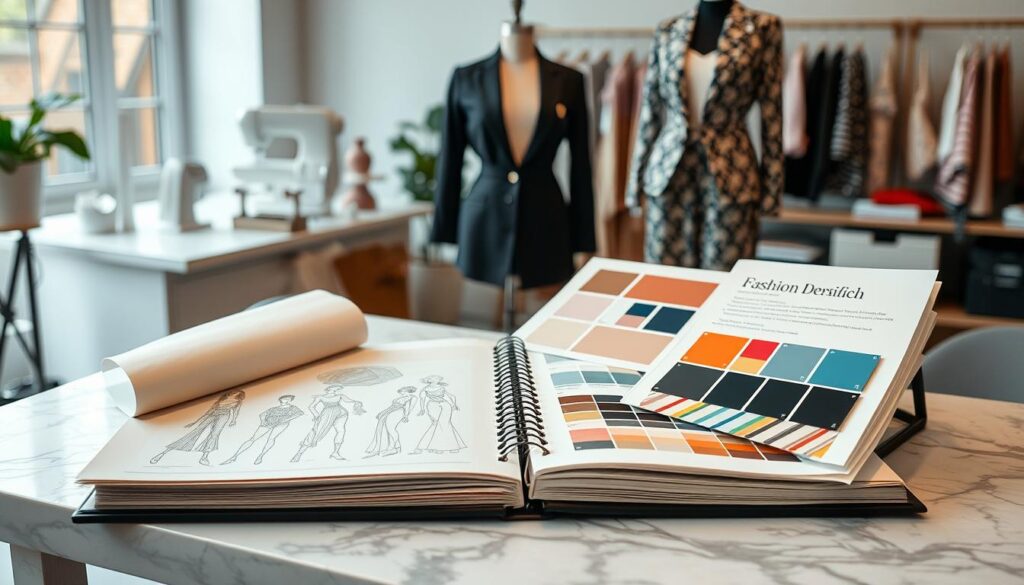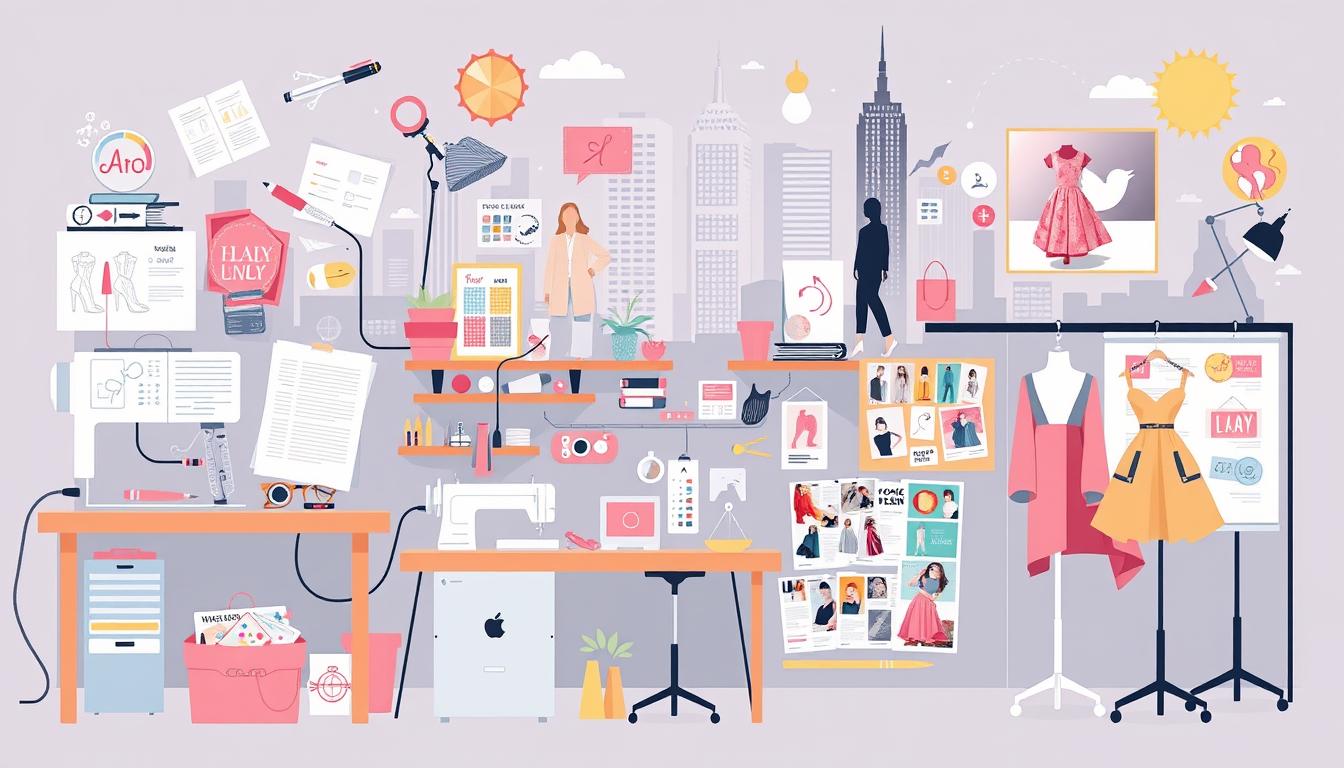Every stitch in the fabric of fashion tells a unique story. For many dreamers, the journey starts with a spark of creativity. It’s more than just skill; it involves finding who you are through art and expression. As you explore fashion’s colorful paths, remember the moments that sparked your passion. Maybe it was an eye-catching outfit or a memorable runway look. These experiences fuel your drive in the fashion world.
Pursuing an education in fashion design might seem tough, but it’s crucial. It helps you grasp the basics and complexities of fashion, from fabric to current styles. Many designers start with academic programs, but others find success through internships or their talent and hard work. As you follow your dreams, crafting a strong portfolio and getting real-world experience is key to triumph.
Key Takeaways
- Nearly 25% of fashion designers work as freelancers, offering flexibility in their careers.
- New York and Los Angeles are the primary hubs for fashion designers in the U.S.
- The highest-earning fashion designers can bring in over $145,000 a year.
- A bachelor’s degree in fashion merchandising is a popular educational path.
- Internships are crucial for developing essential skills and building a strong portfolio.
- Soft skills such as creativity and communication are vital for success in fashion design.
- The employment outlook for fashion designers shows promising growth, with about 2,300 new jobs projected each year.
Understanding the Role of a Fashion Designer
A fashion designer does much more than just sketching and sewing. They blend creativity with technical skills to make new clothing and accessories. Their job is to keep up with consumer trends and preferences. They research styles, decide on colors, and choose the right fabrics.
What Does a Fashion Designer Do?
Fashion designers transform ideas into clothes you can wear. They have several key responsibilities:
- They predict trends using social media, trade shows, and magazines.
- They work with a team to make sure everyone has the same goal.
- They sketch designs by hand or use CAD software for better precision.
- They make prototypes to check if a design works and fits right.
- They look for the best fabrics within a set budget.
- They present their ideas to bosses and clients with mood boards and samples.
- They make sure their designs match what buyers want.
- They travel to gather ideas and develop products.
Skills Required for Success in Fashion Design
To be a top fashion designer, you need certain skills. Here’s what’s important:
- Creativity: You need to make original and beautiful designs.
- Technical skills: Being good at programs like Excel and Adobe Illustrator helps.
- Sewing and pattern-cutting: These skills are vital for making samples and tweaking designs.
- Detail-oriented thinking: Paying attention to details ensures high-quality work.
- Communication skills: It’s crucial for working with a team and sharing ideas.
- Time management: Designers must meet deadlines and juggle several projects.
Success in fashion design also means understanding what customers want. This comes from experience, like internships or mentorships. Having a degree in design or fine arts can be a great foundation. It teaches you important techniques and knowledge for fashion design.
Steps to Take for How to Become a Fashion Designer
To start a career in fashion design, you need a clear plan. There are key steps to boost your chances of success in this tough field. First, focus on getting an education. Then, gain practical experience and work on your portfolio.
Complete a Fashion Design Degree Program
A degree in fashion design is crucial. It helps you understand important concepts like color theory and textiles. Top schools such as FIDM and Parsons offer detailed programs. These last 3-4 years.
Graduating from these schools does more than just grow your knowledge. It also makes it easier to get fashion internships. These give you a closer look at the industry.
Gain Hands-On Experience
Real-world experience is key for future fashion designers. Internships let you see how your classroom learning applies in the industry. They show you the business side and help you meet pros.
Seek out these internships and take on freelance work. Doing this helps get different fashion jobs. It also grows your network in the field.
Build and Maintain a Strong Portfolio
Your portfolio is crucial for showing your talent and creativity. It should have a mix of work like drawings and finished clothes. Start building it early, even before starting your degree.
Keep your portfolio up to date to show your growing style and skills. Include a variety of styles and prove your technical know-how. This makes you stand out when looking for a job.

Conclusion
The path to success in fashion design is colorful, combining education, experience, and creativity. Start with a diploma from a reputable school to build a solid foundation. This first step is crucial for your future in fashion.
Gain real-world experience through internships or part-time jobs. These opportunities let you see the industry up close. You’ll learn valuable lessons and get a feel for the fashion world.
Joining supportive communities, like The Cut Fashion Design Academy, offers great networking chances. Staying up to date with fashion trends in creative cities like Vancouver helps. You’ll connect with new styles and worldwide influences, finding your unique voice.
Continuous learning and making connections are key to success in the competitive fashion world. Designing a personal brand and crafting a standout portfolio are important steps. You may also think about freelancing or working with established brands. Your choices will shape your career path.
For insights into the risks and best practices in the fashion industry, check out Process Story’s disclaimer. With hard work and dedication, you can build a fulfilling career in fashion design.
